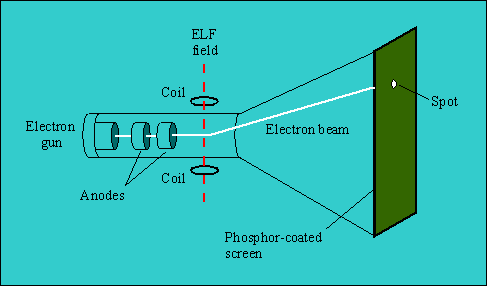
A cathode ray tube consists of several basic components, as illustrated below. The electron gun generates a narrow beam of electrons. The anodes accelerate the electrons. Deflecting coils produce an extremely low frequency electromagnetic field that allows for constant adjustment of the direction of the electron beam. There are two sets of deflecting coils: horizontal and vertical. (In the illustration, only one set of coils is shown for simplicity.) The intensity of the beam can be varied. The electron beam produces a tiny, bright visible spot when it strikes the phosphor-coated screen.

|
The first practical signal generating tubes were invented by Vladimir K. Zworykin and Philo T. Farnsworth. Zworykin invented the iconoscope, which became the imaging iconoscope. Farnsworth invented the image dissector.
Copyrightę 2025. Global Flat Panel Display Industry Study [return to home page] [team] [purpose] [methods] [publications] [technologies] [links]. Updated on June 24, 2025. Send comments or questions to hartj@iu.edu.